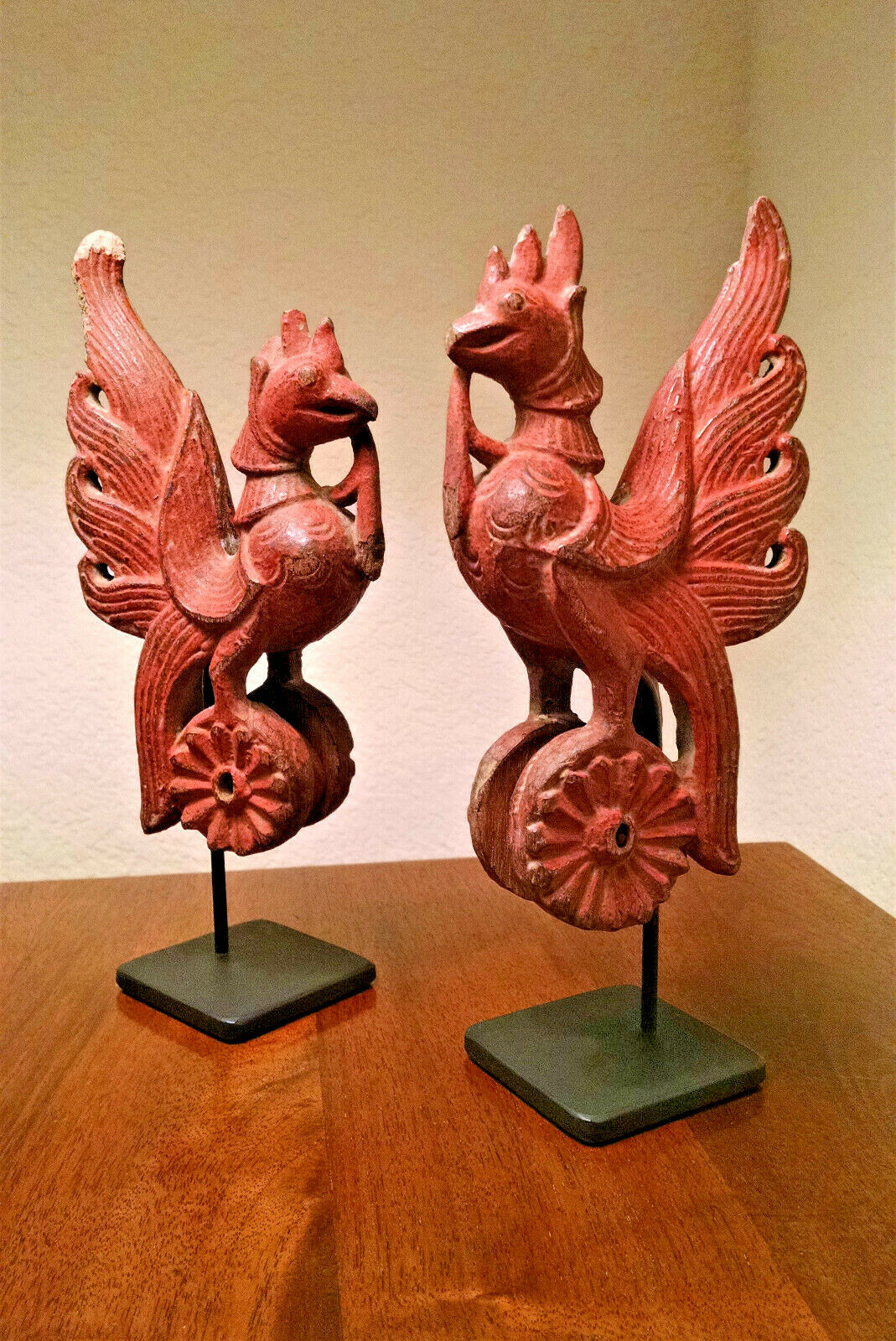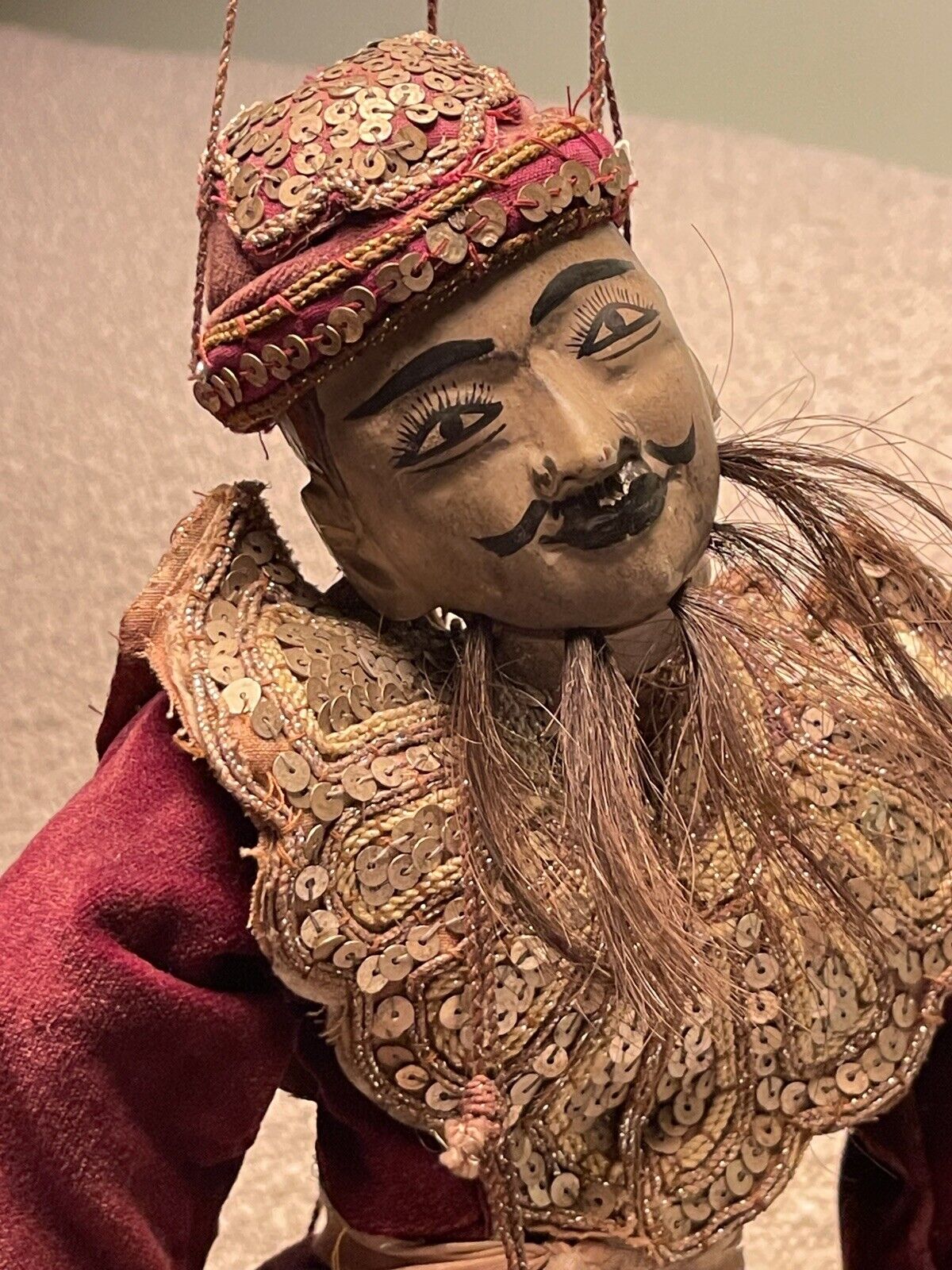-40%
Antique Burmese 'fenghuang' loom pulley pair from Burma (Myanmar), early 1900s
$ 264
- Description
- Size Guide
Description
Beautiful pair of old carved wood Burmese loom pulleys in the form of stylized birds (calledfenghuang
), with smooth flowing lines, rich coloring, and a very attractive patina. Likely c. 1940.
In the past, utilitarian objects in Burma (Myanmar) were often decorated with carved ornaments sculpted from local woods. These two pulleys were carved in the shape of the mythical bird of infinite grace, or
fenghuang
. The
fenghuang
was portrayed as a hybrid between a pheasant and a peacock. In Burma, it is an auspicious creature that provides a link between earth and heaven and sings delightful melodies relying on just five notes. It is often used as a motif in architectural and other designs in Southeast Asia.
This pair of loom pulleys has survived well and is without repairs. Each comes on a custom-made stand and possesses a strong, dignified presence. Authentic old Burmese wood carving pieces like these are rare today, while copies have become common.
The pulleys are roughly (though not exactly) the same size. Each pulley measures approximately 7 inches (high) x 3 1/2 inches (wide) x 2 inches (deep). On its stand, each pulley is approximately 8 1/2 inches high.
The pulleys are in excellent condition overall, with minor losses to pigment/wood in some areas of the wing tips and beaks. These can be seen in the listing photographs.
From the Center for Burma Studies at Northern Illinois University: "Textile production in Burma dates back to AD 500-900. The local textile industry became a prominent part of Burmese culture. The development of the weaving loom not only allowed production of intricate fabrics but also gave artisans an additional space to introduce Burmese ornamentation. Loom pulleys proved to be an excellent source of inspiration because they were suspended in mid air in order to hold threads of cotton. Wealthy families often had elaborate loom pulleys made with decorative mythical creatures. These masterly-cast bronze pulleys were traditionally made in avian [bird-like] forms. The wheels of the pulley served as bases for mythical beings such as the
hintha
(a Brahmani duck), the
kinnara
(half-man and half-bird) and the
bilu
(mythical ogre)."
















